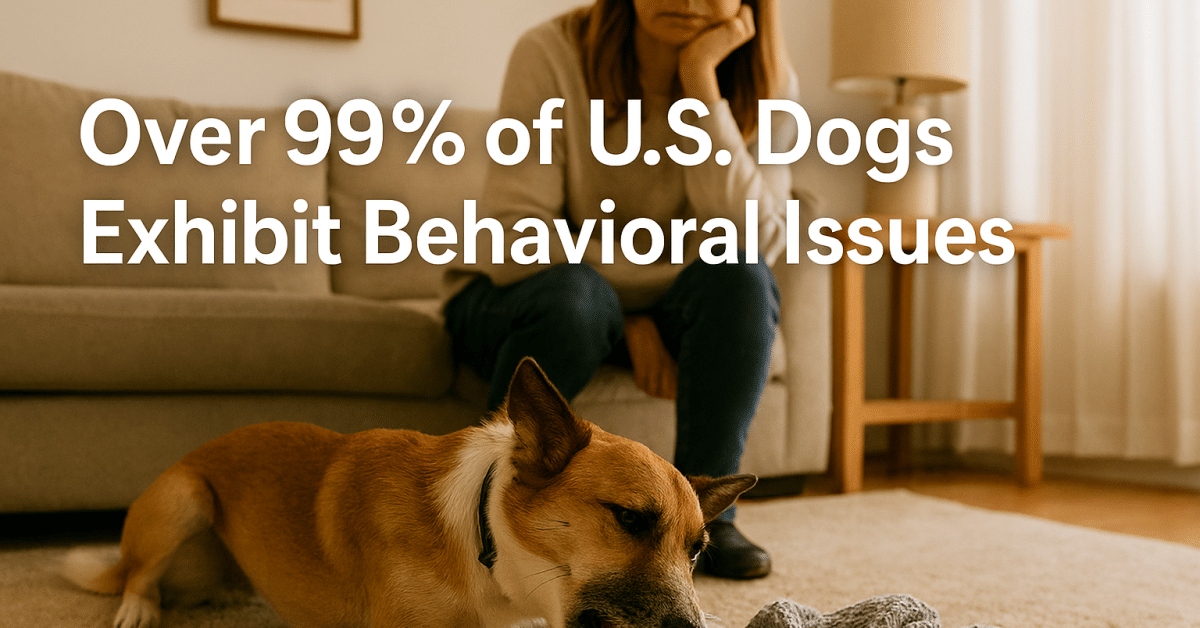
Over 99% of U.S. Dogs Exhibit Behavioral Issues
A recent study from Texas A&M University revealed that over 99% of dogs in the United States display at least one behavioral problem. These issues range from separation anxiety to aggression and fear-related behaviors (ASU News). While some of these behaviors may seem minor, they can escalate if left unaddressed, affecting both your dog’s well-being and your daily life.
Common Behavioral Issues in Dogs
Addressing behavioral challenges early is crucial. Without proper guidance, minor issues can escalate into significant problems. For instance:
-
Chewing: Dogs may chew on furniture, shoes, or other household items when bored or anxious.
-
Barking: Excessive barking can be a sign of stress or lack of training.
-
Aggression: Unchecked aggression can lead to dangerous situations for both the dog and others.
Why Early Training Matters
Addressing behavioral issues early is critical. Trusted animal welfare groups note that proper training helps build trust, reduces anxiety, and supports a calm household environment—even when tools like e-collar systems are implemented responsibly and humanely.
Practical Training Strategies
You can start addressing these behaviors at home with simple, structured habits:
-
Short, frequent sessions: Five-minute sessions multiple times a day are more effective than long, occasional training.
-
Use daily routines as practice: Door manners, leash walks, and mealtimes are perfect opportunities.
-
Reward calm behavior: Mark and reward four paws on the floor, quiet sits, or relaxed downs.
-
Gradual exposure to distractions: Master behavior in quiet settings before adding more distractions.
These strategies help prevent costly problems like chewed furniture or household accidents, as noted in our blog on preventing common puppy problems.
Results You Can Expect
Although each dog is unique, most owners notice:
-
Easier walks and better leash manners
-
Calmer greetings at the door
-
Improved focus around distractions
-
More relaxing and enjoyable time together
Final Thoughts
Behavioral issues affect nearly every dog, but they don’t have to define your relationship. By recognizing early signs and applying consistent, training methods, you can help your dog live a calmer, safer, and happier life.
